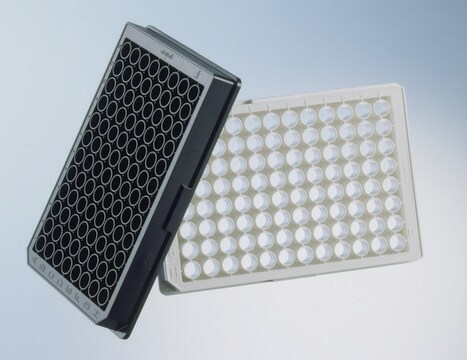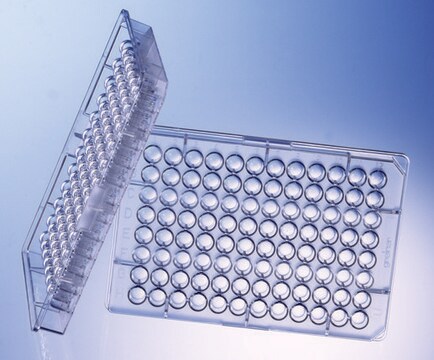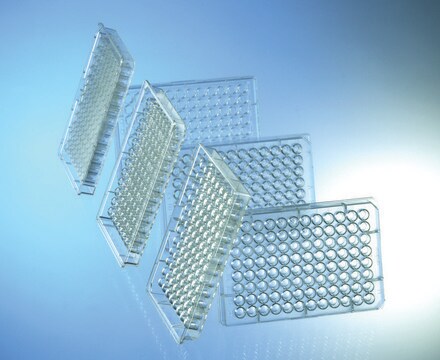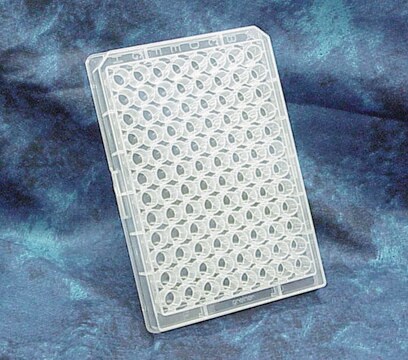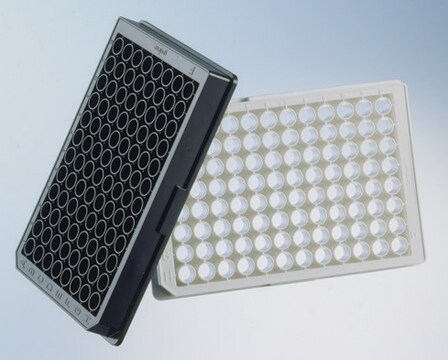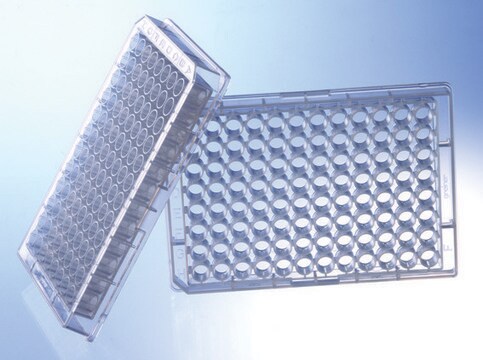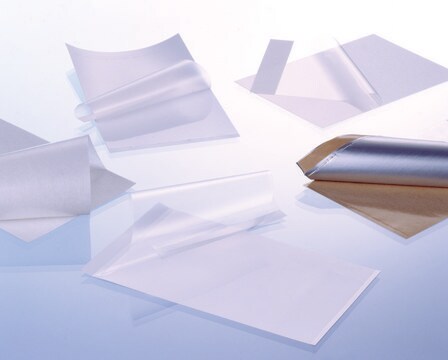M5686
Greiner high and medium binding 96 well plates
flat bottom clear polystyrene wells (with micro-clear bottom), medium binding surface, non-sterile
Synonym(s):
96 multiwell plates, 96 well microplates, 96 well microtiter plates, 96 well strip plates
About This Item
flat bottom clear polystyrene wells (with micro-clear bottom)
skirt (F-bottom)
Recommended Products
material
black polystyrene
flat bottom clear polystyrene wells (with micro-clear bottom)
sterility
non-sterile
feature
lid: no
skirt (F-bottom)
packaging
case of 40
manufacturer/tradename
Greiner 655096
maximum volume
392 μL
size
96 wells
working volume
340 μL
binding type
medium binding surface
Looking for similar products? Visit Product Comparison Guide
General description
Other Notes
Suitability
Legal Information
Choose from one of the most recent versions:
Certificates of Analysis (COA)
Don't see the Right Version?
If you require a particular version, you can look up a specific certificate by the Lot or Batch number.
Already Own This Product?
Find documentation for the products that you have recently purchased in the Document Library.
Customers Also Viewed
Articles
This assay protocol is suitable for the colorimetric/fluorometric detection of Asparaginase activity in bacteria, cell and tissue culture supernatants, plant samples, biological samples, and food samples using the Asparaginase Activity Assay Kit (MAK007).
Protocols
This assay protocol is suitable for the colorimetric/fluorometric detection of phenylalanine in cell and tissue culture supernatants, urine, plasma, serum, and other biological samples using the Phenylalanine Assay Kit (MAK005). Phenylalanine concentration is determined by a coupled enzyme assay, which results in the deamination of phenylalanine and the production of NADH which reacts with the probe resulting in a fluorometric (λex = 535/λem = 587 nm) product, proportional to the phenylalanine present. The linear range of detection for this assay is between 0.2–1.0 nmole.
Assay protocol for the colorimetric/fluorometric detection of Alanine in biological samples using the alanine assay kit.
Assay protocol for the colorimetric/fluorometric detection of glucose and sucrose in biological samples using the glucose and sucrose assay kit.
This assay protocol is suitable for the colorimetric/fluorometric detection of Galactose and Lactose in cell and tissue culture supernatants, urine, plasma, serum, and other biological samples using the Galactose and Lactose Assay Kit (MAK011). In this assay kit, galactose is oxidized by galactose oxidase resulting in a colorimetric (570 nm)/ fluorometric (λex = 535 nm/λem = 587 nm) product, proportional to the galactose present.
Our team of scientists has experience in all areas of research including Life Science, Material Science, Chemical Synthesis, Chromatography, Analytical and many others.
Contact Technical Service